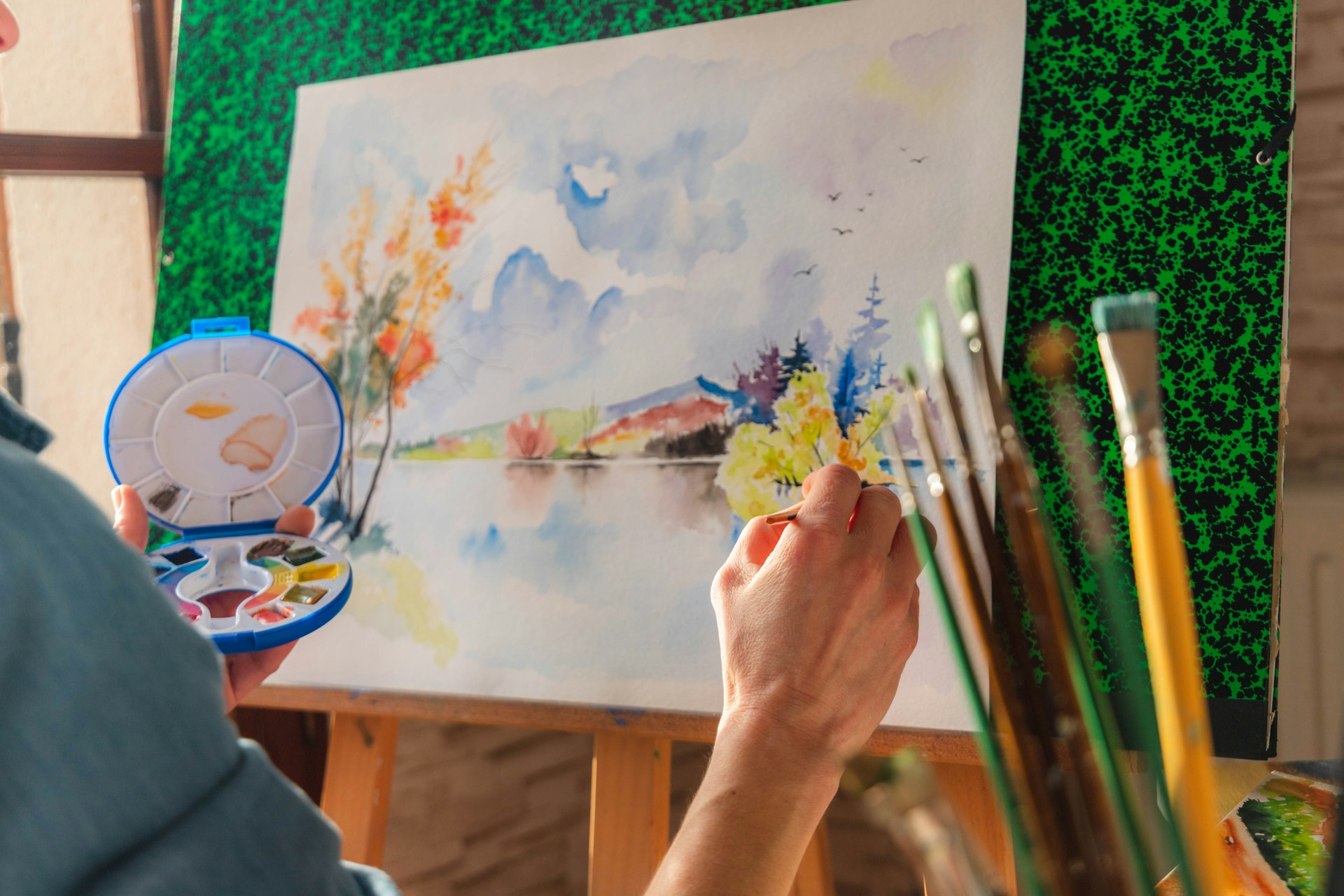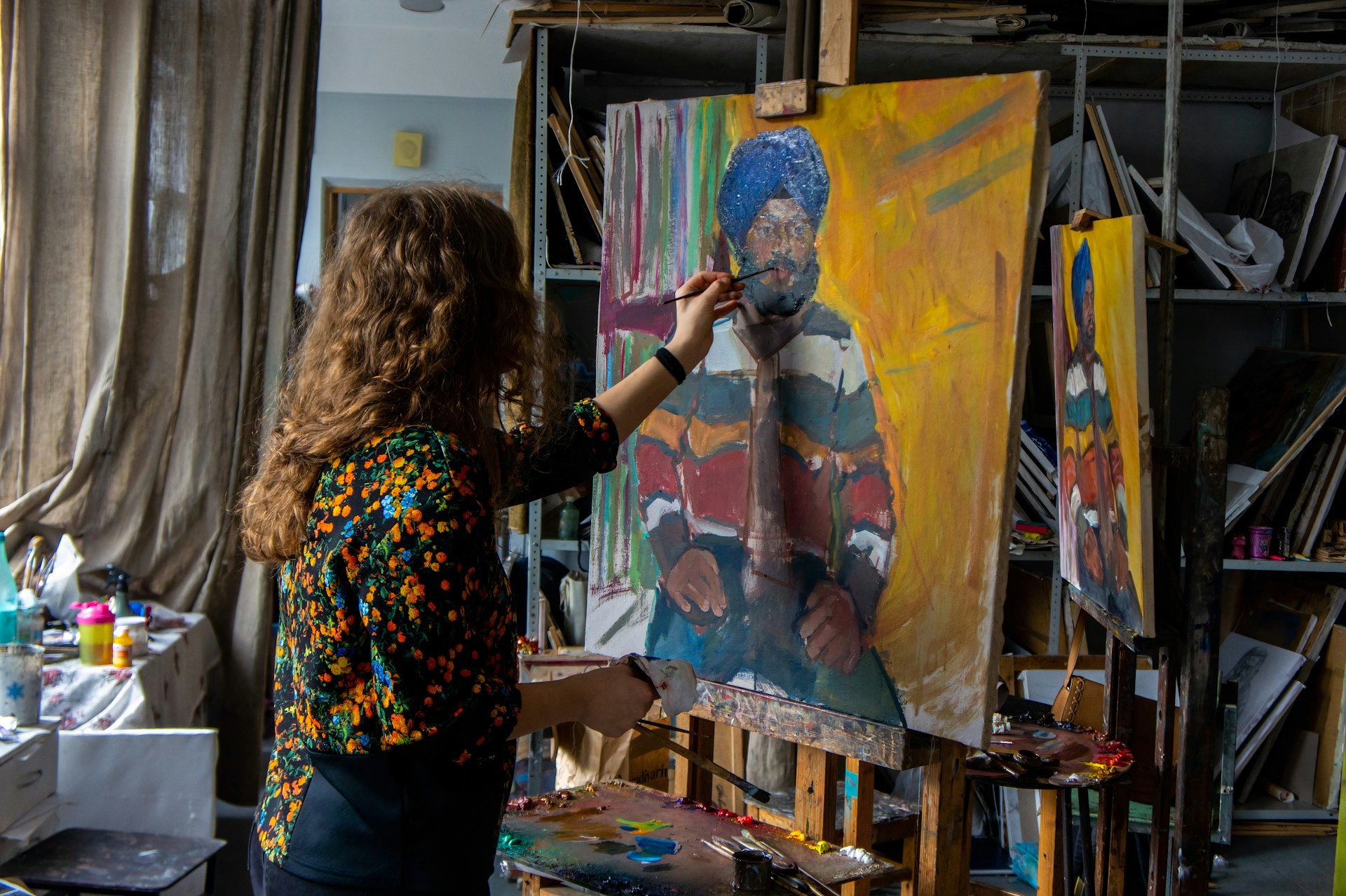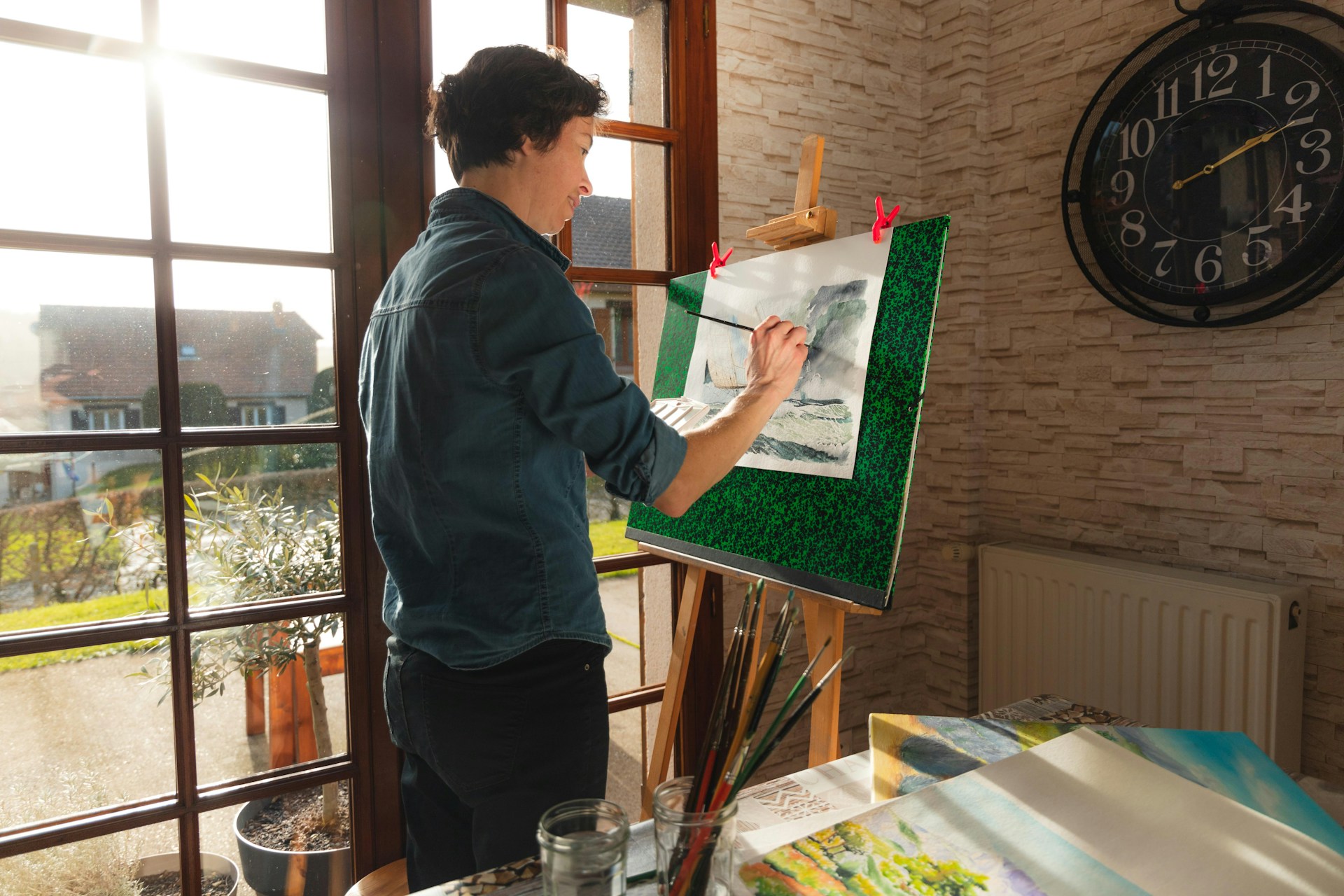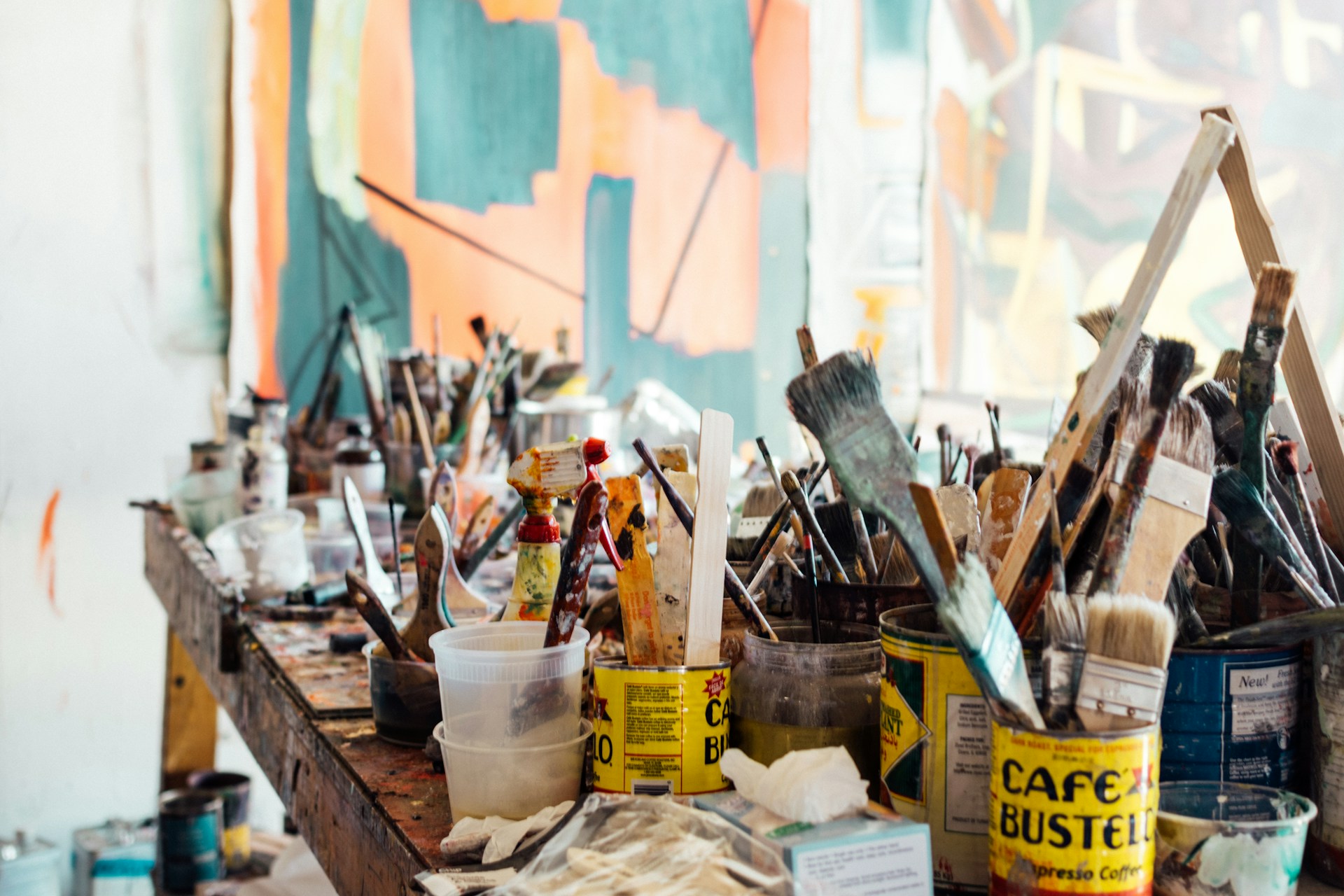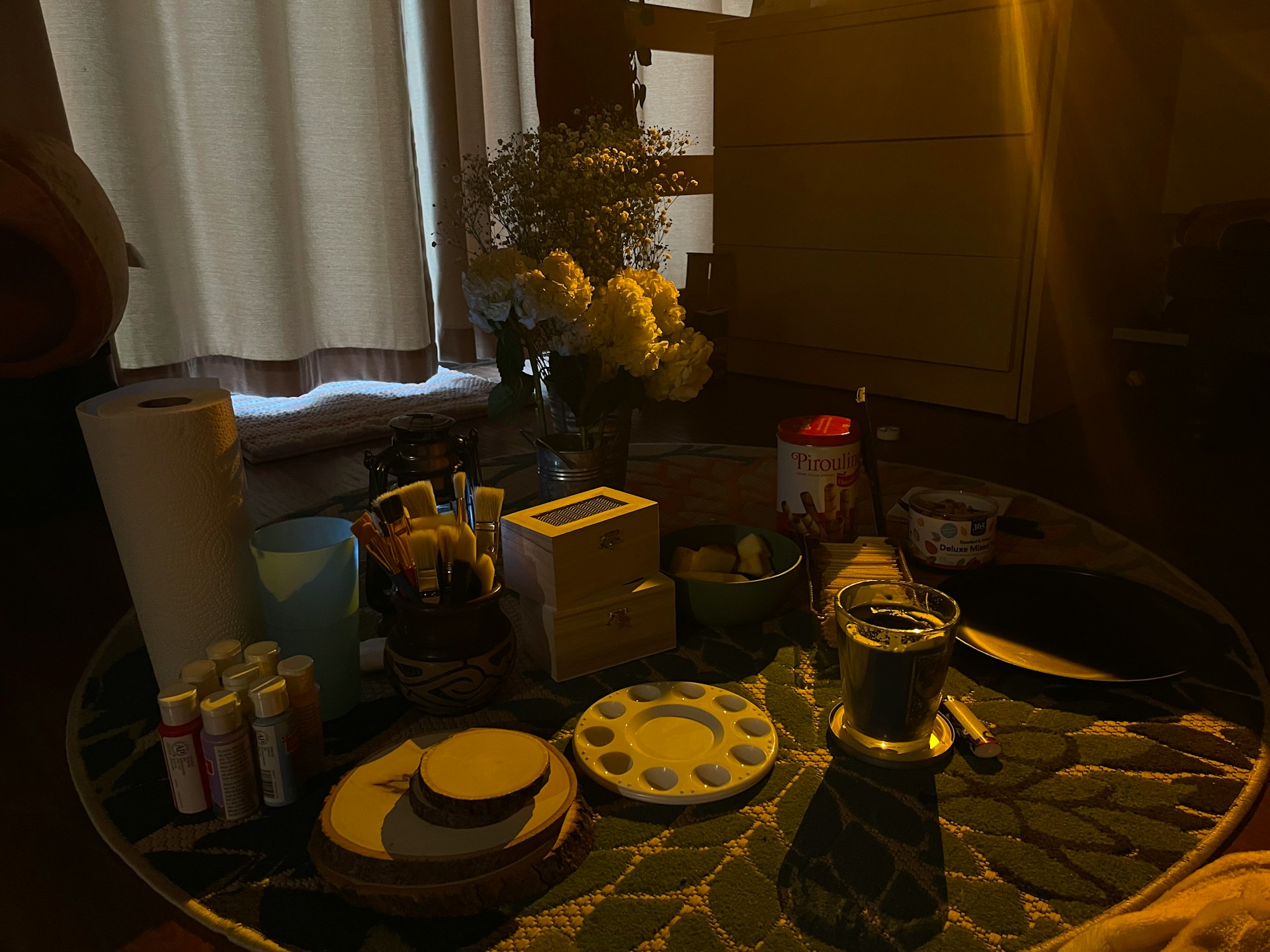If you’re wondering how to start painting on canvas with no experience, a beginner-friendly class is a great way to jump in. Beginner canvas classes guide you step by step, so you can paint stress-free.
These classes make learning fun and easy, even if you’ve never picked up a brush before. At Palmetto Clayground, you’ll find a warm and welcoming space where creativity feels natural.
Want to relax, try something new, or hang out with loved ones? A painting class is perfect. You’ll quickly gain confidence while painting in a supportive, pressure-free environment.
Many sessions include all materials you need, so you only need to focus on enjoying the process. From simple designs to colorful projects, a canvas painting class can turn your blank canvas into something special.
Find out how to get started with beginner classes and tap into your creative side today. More details are available here.
This guide walks you through what to expect, what you’ll learn, and how to make the most of your first painting class—no stress, no experience required.
How to Start Painting on Canvas
Getting started with canvas painting is simple and fun. You’ll need just a few basic tools, pick the right canvas size, and set up a comfy space to work in. These steps make your creative journey smooth and enjoyable from the very first brushstroke.
Essential Supplies for Beginners
To begin painting, you’ll need some basic supplies. Grab a set of quality acrylic paints, which dry quickly and are easy to use. You’ll also want a range of brushes—flat, round, and detail brushes—to try out different strokes.
Don’t forget a palette for mixing colors. A simple plastic or paper plate works great. Keep a cup of water nearby to rinse your brushes between colors. Paper towels or a rag will help you clean up and keep your workspace tidy.
Protect your clothing with an apron or old shirt, and have some newspaper or a plastic sheet to cover your table. With these supplies, you’re ready to start creating without any hassle.
Choosing the Right Canvas
Picking the right canvas size makes your painting more enjoyable. For beginners, a small canvas—like 8×10 or 11×14 inches—works well. It’s big enough for details but won’t feel overwhelming.
Canvas boards or stretched canvases both work. If you want a sturdy surface you can hold, choose a stretched canvas with wooden bars on the back. Canvas boards are lighter and usually less expensive, great for practice.
A top studio offers guided sessions using pre-traced designs on canvases, which can help you feel confident if you’re just starting out.
Setting Up Your Creative Space
Create a clean, well-lit area to paint where you feel relaxed. Natural light is best, but if that’s not possible, use a bright lamp that shines directly on your canvas.
Have your supplies within arm’s reach so you don’t have to stop too often. Set up easy-to-clean surfaces like a plastic tablecloth or craft mat to protect your furniture.
Make sure your chair is comfortable since you might paint for a while. Keep a trash bin nearby for used paper towels and any paint scraps. Setting your creative space well helps you focus and makes painting more enjoyable.
If you want a welcoming place to dive in with all supplies ready and support from instructors, check out these classes and walk-in studio sessions.
What to Expect at Your First Painting Class
Starting a painting class for the first time can feel exciting—and a little intimidating. But at a trusted studio, the vibe is relaxed, the instructions are easy, and everyone’s welcome, no matter your experience level.
What Happens When You Arrive
You’ll walk into a cheerful, casual space filled with color and creativity. Staff will greet you and help you choose your seat and supplies. Everything you need—canvas, brushes, apron, and paints—is ready and waiting. No need to bring anything but your curiosity.
Step-by-Step Support from Instructors
The class starts with a simple intro. Instructors explain what you’ll be painting and walk through each step. You can follow along closely or go off-script—it’s totally up to you. The guidance is friendly and pressure-free, perfect for first-timers.
A Relaxed Pace and Positive Atmosphere
Expect lots of laughter, helpful tips, and the freedom to go at your own speed. You’ll have time to explore, ask questions, and enjoy the process. Most people leave not just with a painting—but with a big smile, too.
Fundamental Techniques for Beginners
To start your canvas painting journey, you'll need to get comfortable with mixing colors, using different brushes, and sketching your ideas on the canvas. Each skill builds your confidence and lets your creativity flow without stress.
Understanding Color Mixing
Color mixing helps you get just the right shade for your painting. Start with the three primary colors: red, blue, and yellow. Mix these to create secondary colors like green, orange, and purple.
Use a palette or a paper plate to mix small amounts. Add white to lighten colors and black to darken them. Too much black can muddy your colors.
Try out different mixes on scrap paper before you paint on your canvas. This gives you control and introduces you to new shades.
Mastering Brush Strokes
Brush strokes give your painting texture and life. You’ll mainly use three types:
- Flat stroke: Smooth and straight. Great for backgrounds and filling spaces.
- Dab stroke: Small, dot-like touches. Perfect for details and texture.
- Swirl stroke: Circular or curved motions. Good for clouds or leaves.
Hold your brush lightly, and change pressure for thin or thick lines. Experiment on paper to see how each stroke changes the look.
Applying Basic Sketches on Canvas
Sketching on canvas helps you plan your painting. Use a pencil or light charcoal to draw simple shapes before you paint.
Start with big shapes to place your design. Then, add smaller details slowly. This step keeps your painting balanced and clear.
Keep sketches light, so paint covers them easily. Don’t worry about perfection—it’s just a guide for your brush!
Trying these basic steps will help you find your style and enjoy your creative time.
Step-By-Step Painting Projects
When you start painting, clear guidance helps you build confidence. Simple projects with easy steps let you focus on learning basic skills while having fun. You’ll explore different styles like abstract, landscapes, and still life, each offering a unique way to practice color and shapes.
Easy Abstract Designs
Abstract painting is perfect when you want to enjoy painting without worrying about details. You’ll work with bold colors and shapes that don't have to look like anything specific. This style teaches you how to mix colors and use brush strokes freely.
Start by choosing 2-3 bright colors. Use big, sweeping brush strokes or dabs to cover your canvas. Don’t stress about mistakes—they add character! Play with patterns like zigzags, dots, or stripes.
Simple Landscapes
Painting landscapes helps you practice shapes, layering, and blending colors. You’ll learn how to create a sky, ground, and objects like trees or hills in a few easy steps.
Begin with a light wash of sky using blues or oranges, then add land with greens or browns. Use a small brush for details like trees or clouds. Focus on shapes like triangles for trees and soft curves for hills.
Guided classes make this process easy by breaking down each part of the landscape into simple moves you can follow.
Starting With Still Life
Still life painting helps you see simple objects and practice shapes and shadows. You'll start with easy items like a bowl of fruit or a vase. This helps train your eye to notice how light and color work on different surfaces.
Begin by sketching basic shapes with a pencil. Then, paint the main colors first. Use light and dark tones to add depth. This approach helps you focus on one part at a time.
Instructors will guide you through each step, making it a calm, enjoyable learning experience.
Painting Tips to Help Beginners Improve
Growing your canvas painting skills takes time and effort, but with the right mindset and strategies, you can keep improving and enjoy the process.
Staying Inspired and Motivated
Keep your painting fun by trying new ideas and colors. Set small goals for each session, like mastering a brushstroke or mixing a new shade. Celebrate these little wins—they keep you eager to paint more.
Surround yourself with creativity. Visit Palmetto Clayground or check out art books and online videos when you feel stuck. Seeing others’ work can spark fresh ideas and keep your enthusiasm high.
Art is about exploring. Don’t worry about perfection. Every painting is a step forward and a chance to learn. Make time regularly, even just 15 minutes a day, to practice your new skills.
Troubleshooting Common Beginner Mistakes
If your paint feels thick or hard to spread, use a little water or medium to thin it. Avoid overloading your brush; start with less paint and build up layers instead of doing all at once.
It’s normal to struggle with proportions or shapes at first. Break your design into simple parts and paint one shape at a time. Use light pencil lines to guide you before painting.
Don’t get discouraged by smudges or color mixes that don’t look right. You can fix mistakes by painting over them once the area dries. Patience helps you stay calm and keep your canvas looking fresh.
Use your brushes gently to prevent streaks and uneven paint. Clean them often when switching colors to keep your colors bright and clear throughout your painting session.
Your First Painting Class is Just the Beginning
Canvas painting isn’t just a hobby—it’s a way to relax, recharge, and rediscover your creativity. With the right space, a little guidance, and no pressure to be perfect, even beginners can make something they're proud of.
At Palmetto Clayground, you’re not just painting—you’re making memories, building skills, and having fun along the way.
Looking for something fun and different? Drop by — no reservation needed.
Frequently Asked Questions
You might wonder how to get started, where to find classes, or if free options exist online. Questions about types of paint and the best places to learn are also common for new artists.
What's the best way for a beginner to get started with canvas painting?
Start with simple supplies like acrylic paints, basic brushes, and a small canvas. Try guided classes that focus on easy techniques. Practicing regularly helps build confidence.
Where can I find exciting canvas painting classes for beginners?
Look for local studios like Palmetto Clayground, where you can walk in without an appointment. They offer guided sessions that are fun and stress-free. You’ll find a welcoming spot for all skill levels.
Are there any free beginner canvas painting classes that I can join online?
Yes, many websites offer free beginner tutorials. Search for step-by-step videos or live sessions. These classes give you a good start at your own pace with no cost.
Which online platforms offer the most engaging beginner acrylic painting courses?
Sites like Udemy and Skillshare often have beginner acrylic courses. Look for ones with clear instructions and beginner-friendly projects. Video reviews can help you pick the best fit.
Can you recommend some beginner-friendly YouTube channels for learning canvas painting?
Channels like “Painting with Jane” and “The Art Sherpa” are great for beginners. They show simple projects and explain steps clearly. You can follow along easily and pause anytime.
How do oil painting classes differ from acrylic for new artists in Los Angeles?
Oil painting takes longer to dry and needs special brushes and supplies. Acrylic dries faster and is easier to clean up. Beginners often find acrylic classes more relaxed and less expensive in LA.

